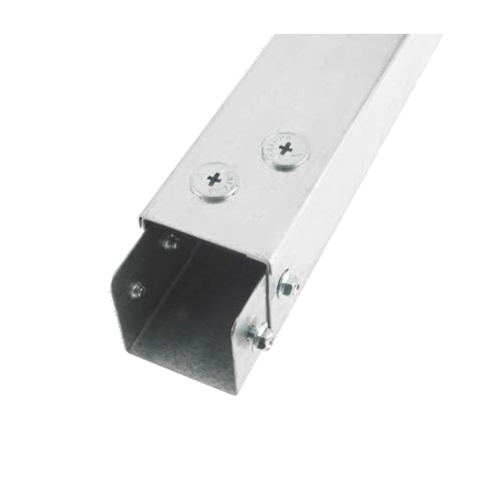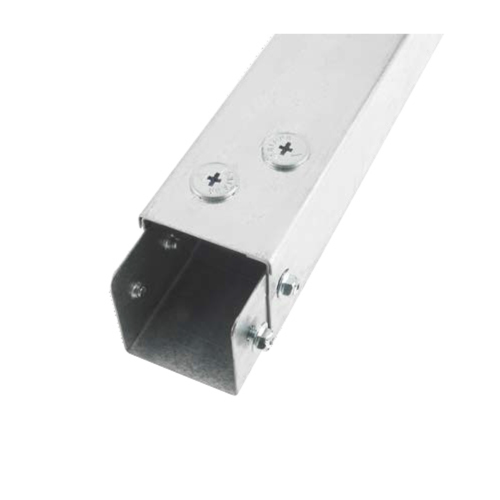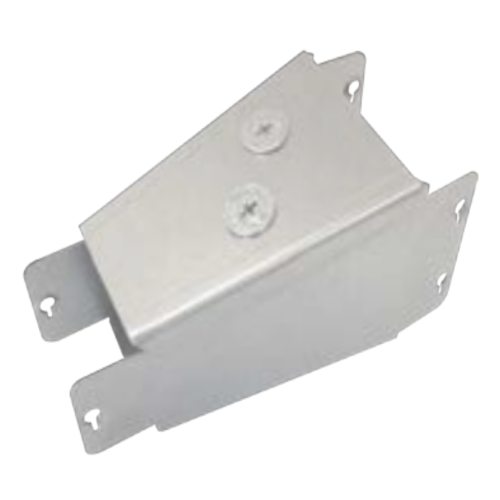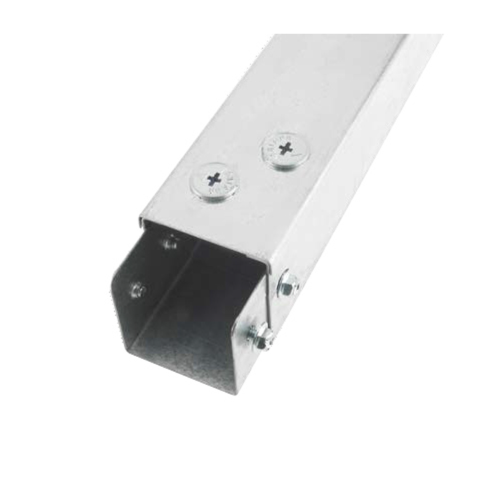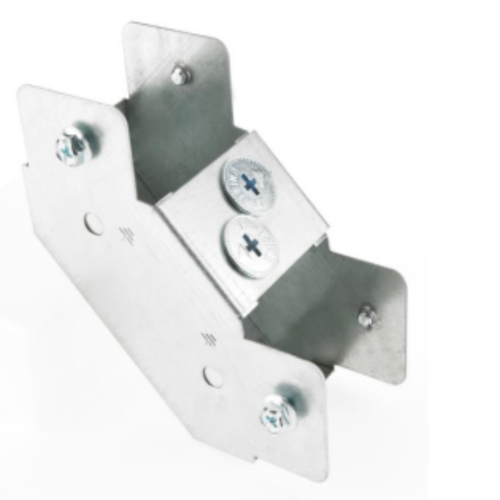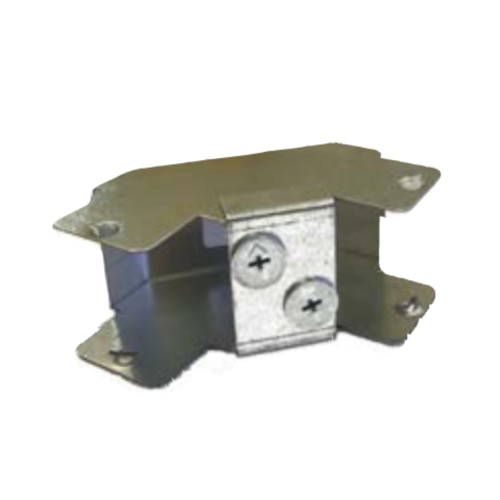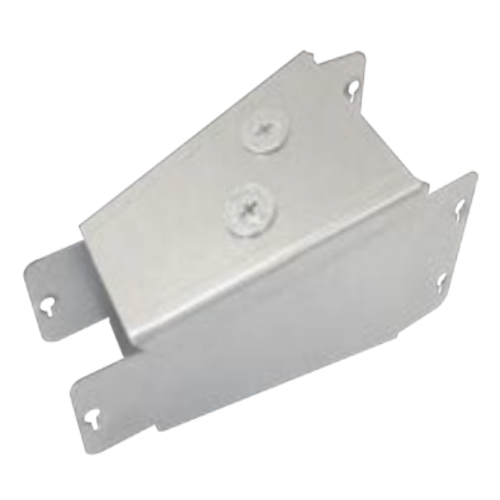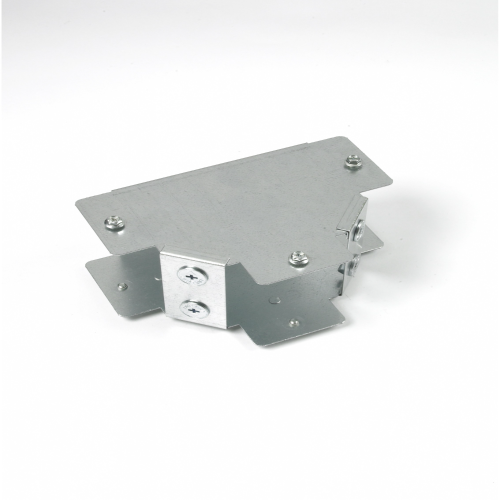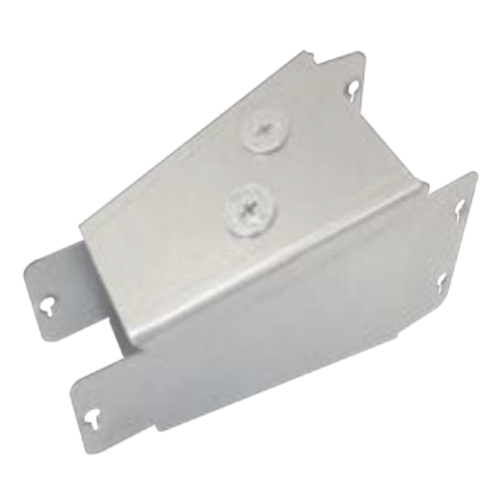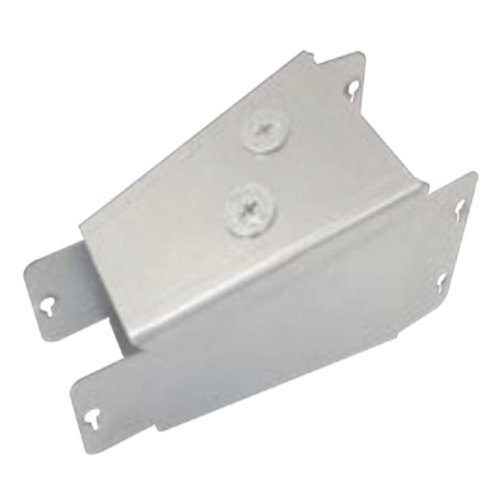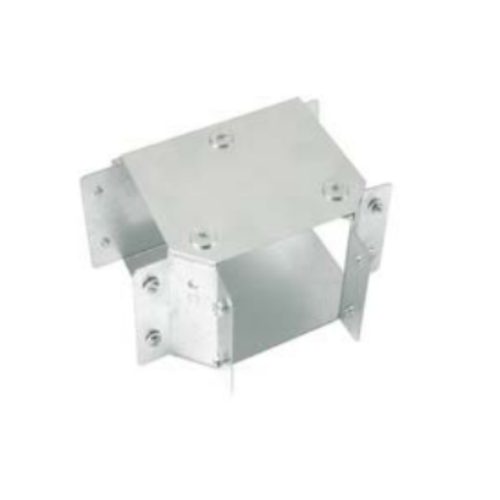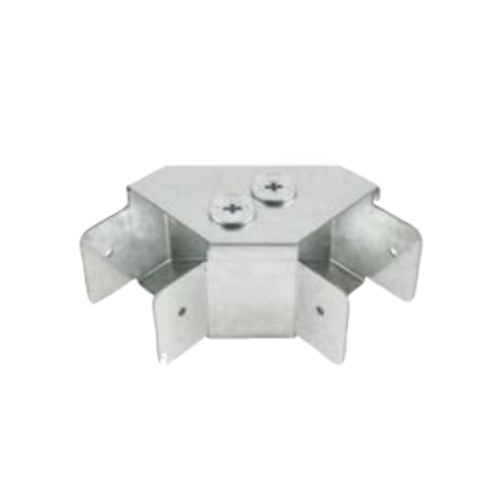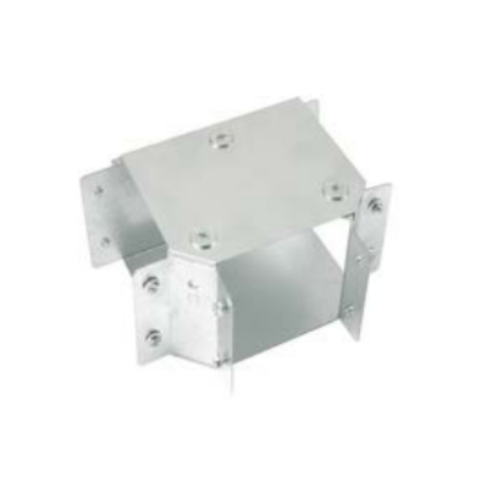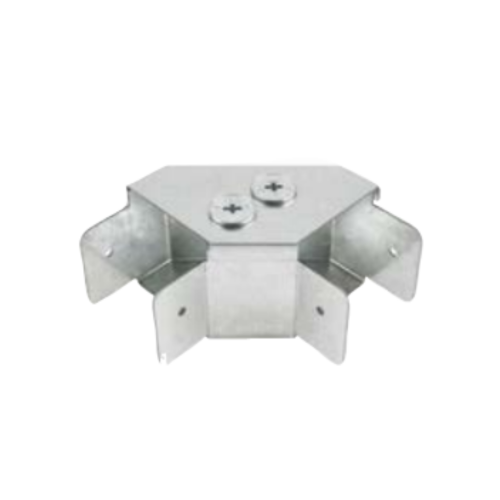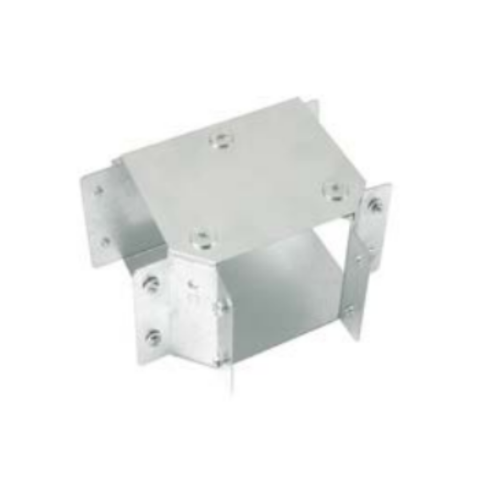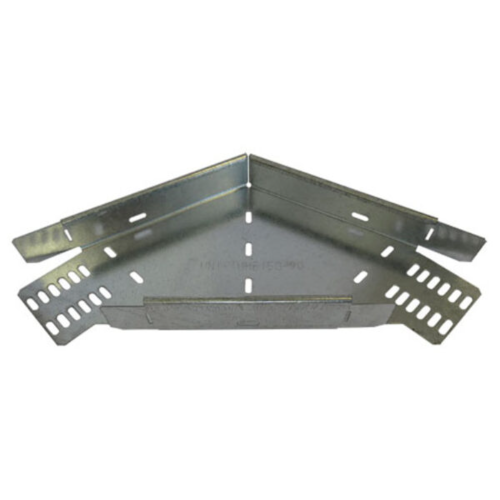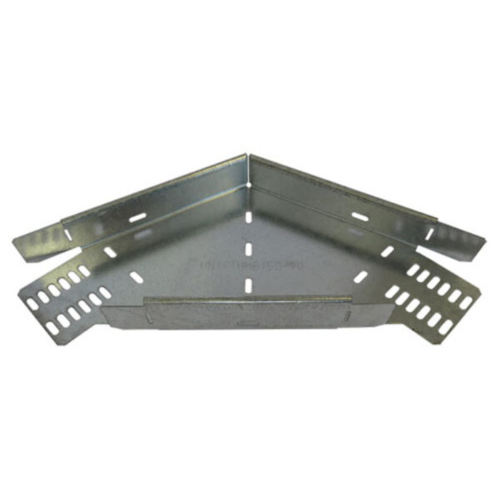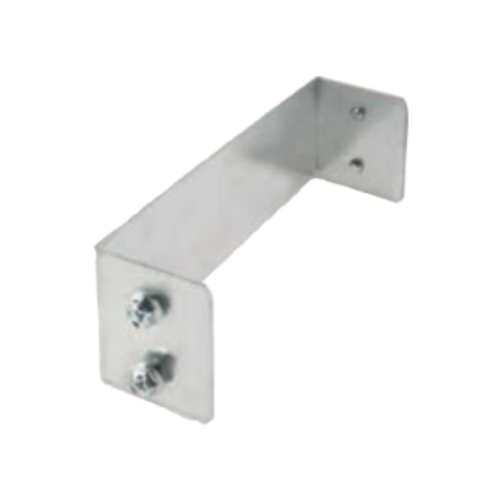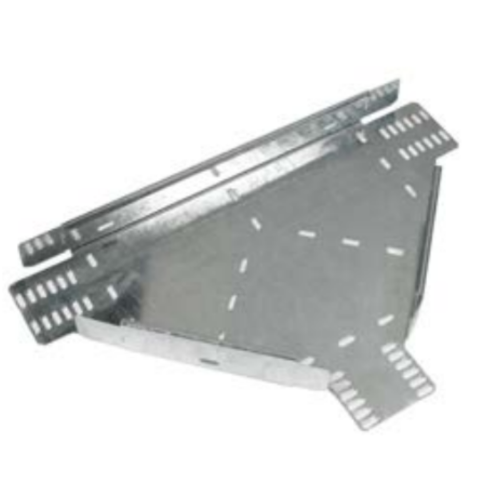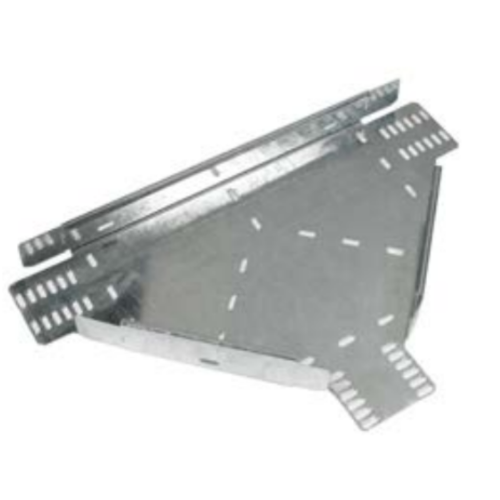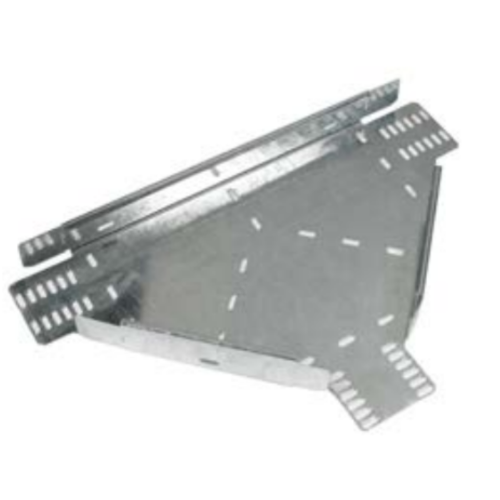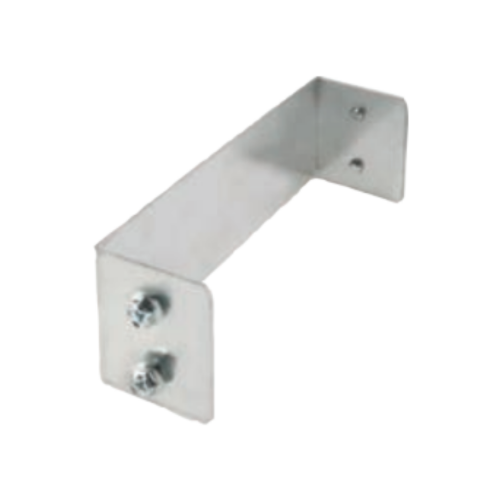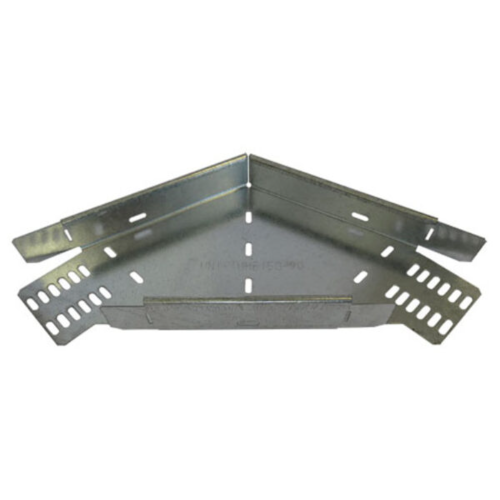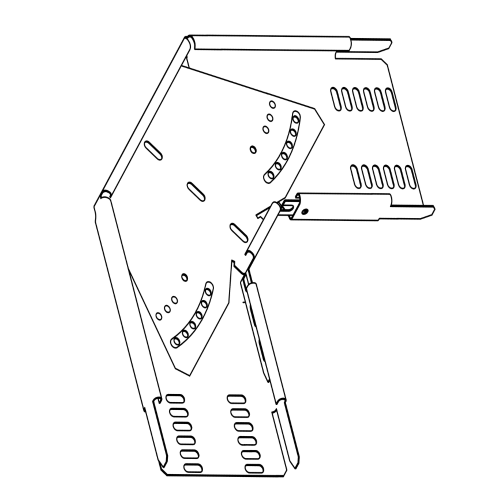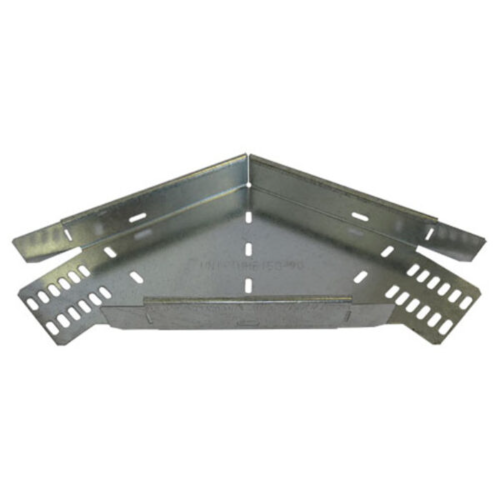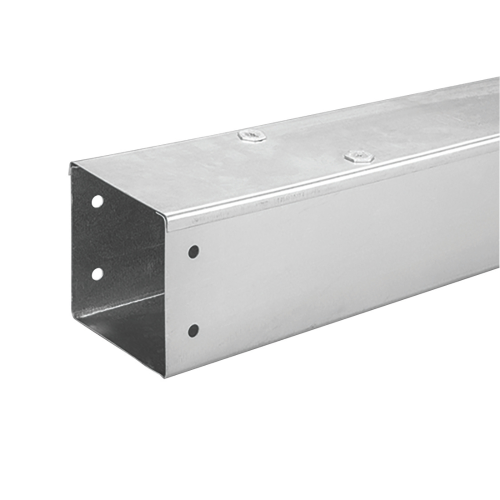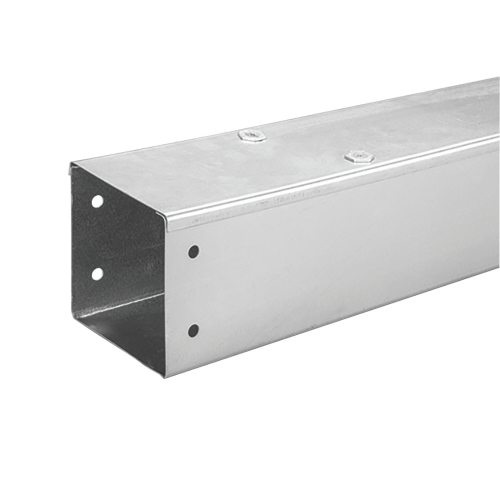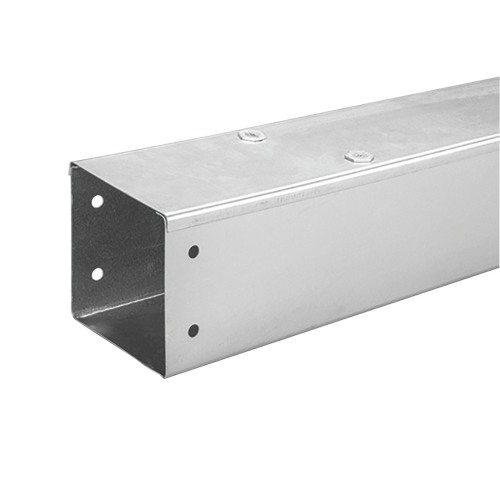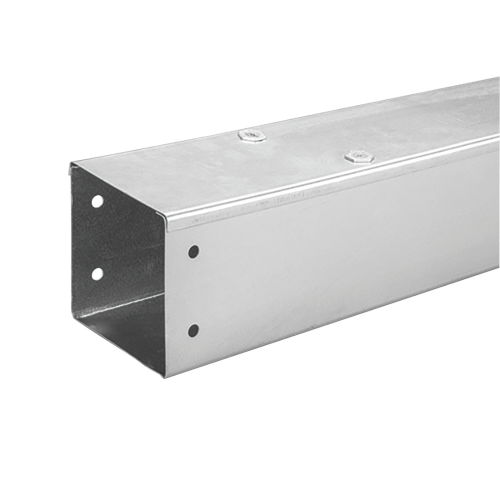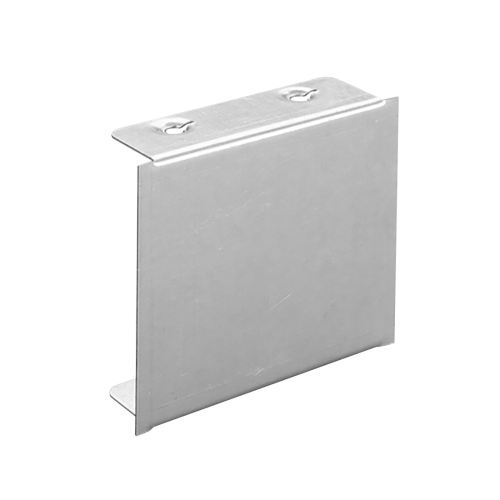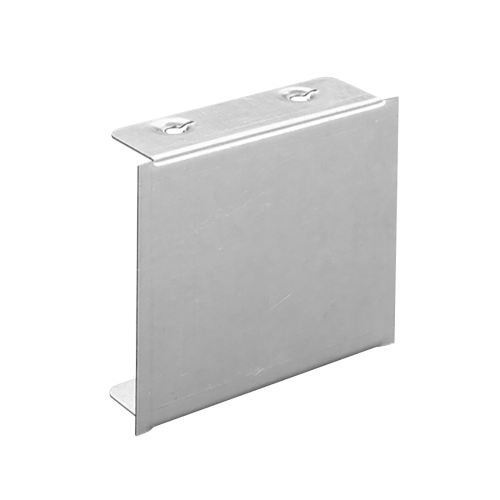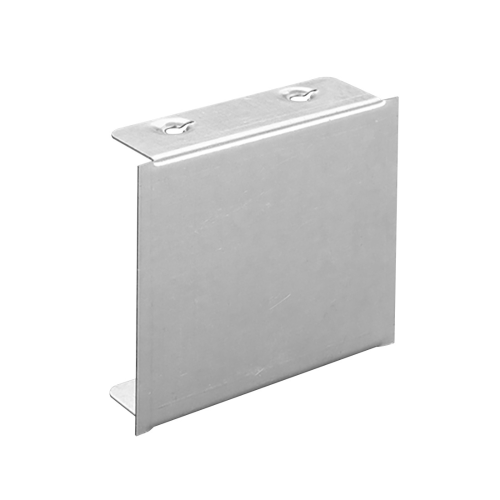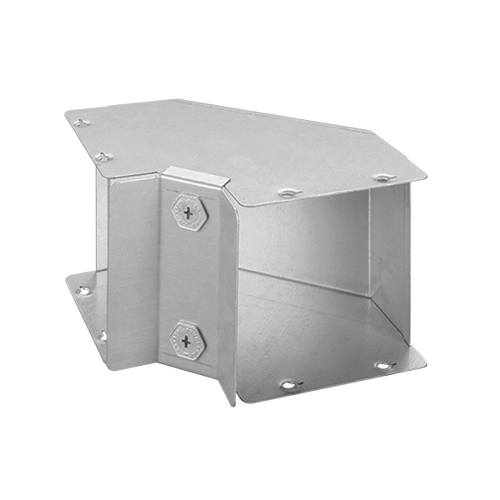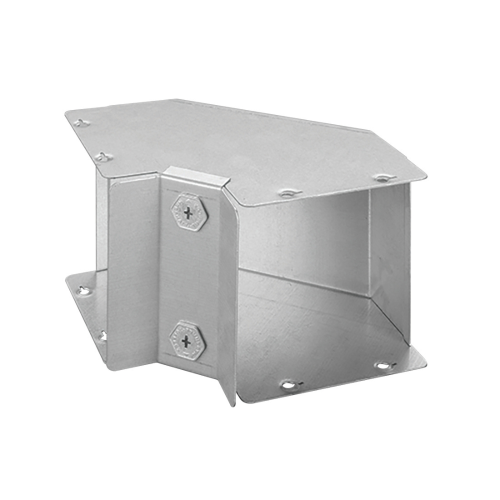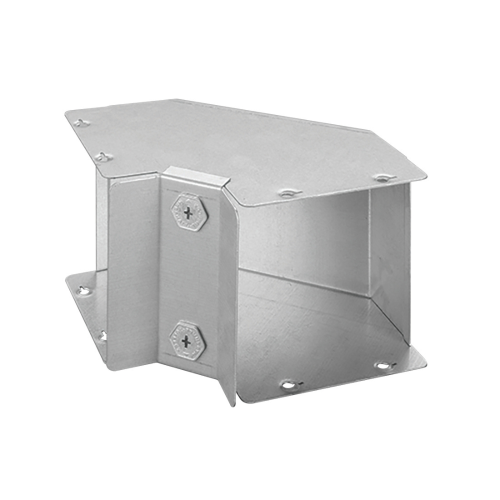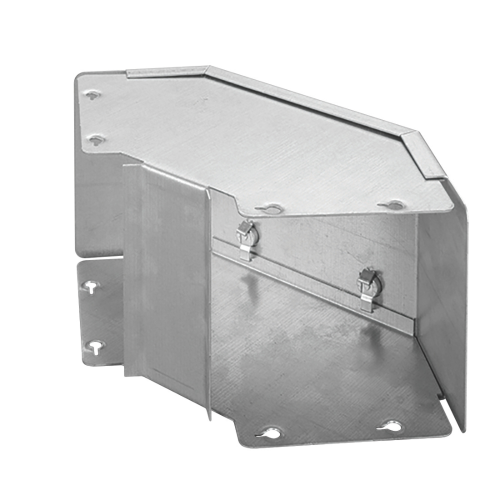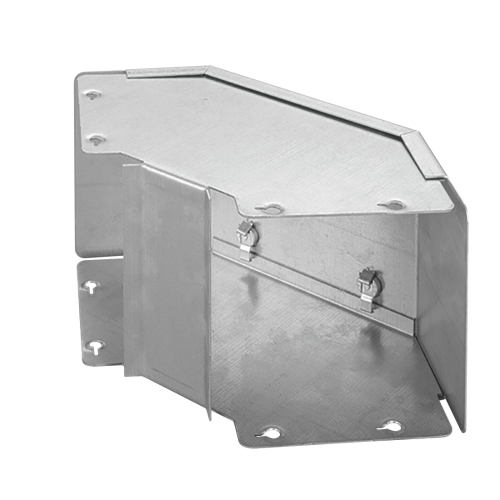Galvanised Steel Trunking
To protect your wiring from damage, you must install metal trunking. Metal trunking is long rectangular fittings that keep your wiring organized, and this metal trunking acts as a metal cable protector. Metal trunking comes in a variety of different materials; however, the most common type of metal trunking is galvanised steel trunking.
Galvanised steel trunking is a commonly used trunking material because it offers long-lasting protection. You can find such metal cable trunking at Meteor Electrical. Before installing metal cable trunking, there are some important things you need to know. Here's a detailed blog on cable trunking types and their installation.
Shop our full range of Galvanised Cable Trunking accessories such galvanised steel capping, bends, and more in our Cable Management section. All of our products in stock are available for next-day delivery!
What Is Metal Trunking?
Metal trunking houses electrical cables and enables plastic and metal cable protection from hazardous elements. These metal trunkings are often hidden behind plasters within a wall. Some metal trunking is also installed underneath the flooring. Metal trunking is important because they keep everything in position and prevents your wiring from mixing up.
Steel trunking is an important part of cable management. Steel trunking uses cable management to keep your electrical wiring safe and in operation. Steel trunking’s safety features house all the electrical currents and stop the spread of fire in case of a short circuit. Steel trunking regulatory and practical aspect of electrical installations.
Electricians prefer using full trunking systems over electrical conduits, especially in complex installation and circuits. Trunking systems are ideal when a higher capacity for routing thicker wiring bundles is required.
Many industrial settings and workplaces use metal trunking to supply power to machines or devices in multiple locations. The trunking systems in such sites are usually waist height to allow a well-designed system to carry various wires along the same path. Trunking systems also work best if a cabling run needs to perform several bends or when large exposed runs must be maintained efficiently and safely around large areas.
Rigid metal trunking systems are more modular than most conduit installations, even though they don’t have the same level of flexibility. Trunking sections are shaped as rectangular or square or are flattened for an inconspicuous appearance.
Most trunking systems are designed to slot together, and this is done with angled joint pieces with each trunking length. You can find numerous metal trunking accessories at Meteor Electrical.
Steel trunkings are commonly used for protection as they have a solid outer layer that keeps your wiring safe. Steel trunking is also used to protect wires from chemical vapours, moisture, and impact.
Metal cable trunking's structural composition also makes them a great choice for quick and easy installation. Metal cable trunking is important for wiring as it allows the current to travel between multiple terminals and devices.
Metal cable trunkings are commonly installed in any potentially hazardous areas. These dangerous elements could either be physical or environmental. Weather-related or ambient conditions such as extreme temperatures and moisture may be good reasons to choose metal cable trunking or other protective cable sleeving.
If cables and conductors need to run across locations where they might cause a tripping or snagging hazard, metal cable trunking will offer a level of protection for the physical wiring to prevent any future accidents. However, one important thing to note is that you must only use metal cable trunking in appropriate locations.
Steel cable trunking is commonly used in a raised or wall-mounted configuration. Always put steel cable trunking where your cables are hidden or elevated. If you have cables running across an open floor area, you will find better results with a dedicated cable protector or cable cover for plastic or metal cable protection.
Some steel cable trunking is partly concealed or embedded for further wiring protection. Steel cable trunking is also a great way to clean up and organise the appearance of your wiring, as this equipment acts as an effective cable management system. Some common everyday applications for steel cable trunking include:
- Cleaning up wiring running across the ceiling
- Organising outdoor cables
- The neat organisation of underground cable runs
- Securing any wiring around wall sockets and electrical units.
In these applications, using a sheathed cable with steel cable trunking is an effective way to guard against cuts, knocks, general degradation/damage, and environmental conditions. The steel cable trunking protects anyone working near wiring from accidental exposure to current and voltage.
Before installing metal electrical trunking, you must check the electrical regulations of your building. Metal trunking must fit regulations to provide the most effective protection. Always check with a qualified electrician for any concerns about metal electrical trunking. To find the best range of metal electrical trunking, visit Meteor Electrical.
What Are The Standard Steel Trunking Sizes?
The standard steel trunking sizes are as follows:
- 50mm x 50mm
- 75mm x 50mm
- 75mm x 75mm
- 100mm x 50mm
- 100mm x 75mm
- 100mm x 100mm
- 150mm x 75mm
- 150mm x 100mm
- 150mm x 150mm
How Does Cable Management Use Steel Trunking?
Cable management systems are important as they protect your cables and impact the speed and ease of installation. Incorrect cable management systems can greatly hinder the installation layout and design.
Steel trunking is one important aspect of cable management. To ensure proper cable management, you must look for the correct specifications to ensure scalability and future-proofing. Make sure to get the correct specifications of your metal electrical trunking.
Other than the specification, you must also consider how the material affects your installation process. If you don’t get the appropriate material for your metal electrical trunking, the trunking will suffer corrosion and shorten the equipment’s service life.
Apart from this, the wrong material can also increase installation costs without giving you any extra value in terms of service longevity or durability. Once you decide on the material and the finish, you must also look at the required width and depth, as there are numerous steel trunking sizes.
Weight is also important, and you must decide whether you want trunking that is medium, heavy or standard duty. Due to so many variables, it is important to understand that cable management is not a one-size-fits-all approach, and you should do research before looking for your preferred metal electrical trunking.
How Does The Environment Impact Trunking Steel?
If you want to install trunking steel outdoors, you need to understand how the environment affects this trunking steel. Several outdoor elements affect the trunking steel, and these elements impact the longevity of your trunking steel.
Consider whether the trunking steel will be in inland or coastal location. Will the trunking steel require protection from pollution or other atmospheric elements? Establishing a criterion will help you protect your trunking steel for a long time. Most electricians recommend using galvanised cable trunking for the best cable management system.
Galvanised cable trunking comes in several varieties, depending on their level of security. Standard cable management trunking is usually pre-galvanised or has a hot-dip galvanised coating. These galvanised cable trunking provide high-quality protection from extreme weather elements.
Some galvanised cable trunking is only fit for insulated buildings to protect wiring against humidity. However, there are several galvanised cable trunking that protects wiring against environmental damage in coastal areas. There are also specialised galvanised cable trunking that withstands dust and other pollution elements.
Some Important Tips To Protect Galvanised Cable Trunking
Even though galvanised cable trunking provides several benefits for your cable management system, it can also create risks if you don’t manage them well enough. Here are some important tips to follow to keep your galvanised trunking in the best possible condition.
White Rust
Some galvanised trunking contains zinc; when this fresh zinc surface comes into contact with wet surfaces, you might experience white rust.
When the galvanised trunking is stored in a wet environment without amply oxygen and carbon dioxide, a white powdery and porous compound starts appearing on the galvanised trunking. This rust usually occurs when your galvanised trunking has a light coating or zinc.
White rust can cause major damage to galvanised trunking; therefore, it is recommended you install galvanised trunking with heavier coatings that won’t experience weakened integrity as a result of white rust.
Galvanic Corrosion
Galvanic corrosion or bimetallic corrosion can also affect galvanised trunking. This electrochemical process occurs when two different metals are immersed in a conduction solution and connected electrically.
Once they are connected, the cathode metal stays protected while the anode metal suffers corrosion. Make sure to check the metal specification of a galvanised trunking to avoid galvanic corrosion.
Zinc Whiskers
Zinc whiskers are a form of corrosion that is highly risky to business-critical trunking equipment in data centres. Zinc whiskers are metallic filaments that can grow on any form of galvanised surface.
To avoid zinc whiskers from ruining your data equipment, opt for power-coated or stainless steel trunking instead of galvanised cable trunking systems. These filaments detach and float into the atmosphere. The floating filaments will damage any sensitive equipment nearby.
Why Choose Galvanised Trunking?
Cable management trunking made from galvanised materials provides additional protection from corrosion, UV rays, outdoor exposure, and chemical agents. Other benefits of a galvanised coating include:
- Galvanised coating is a cost-effective method of protecting trunking
- The galvanised coating deteriorated at a much slower rate for a long-lasting trunking
- Once the galvanised coating erodes, it does not immediately affect large areas of the trunking
- The zinc in galvanised coating prevents “creepage” onto other exposed surfaces.
What Is The Difference Between Pre-Galvanised And Hot-Dipped Galvanised Coating?
A pre-galvanised coating means that the steel sheet had experienced a hot-dipped galvanising process when it was being manufactured. On the other hand, a hot-dipped galvanised trunking is completely immersed in a bath of molten zinc at 450 degrees celsius. The trunking remains in the bath until its temperature is the same as that of the zinc material.
During this process, the molten zinc reacts to the surface of the steel and forms a series of zinc alloys. When the trunking is removed from the zinc bath, the zinc coating forms and solidifies. Manufacturers remove the excess zinc for a smooth finish. The extra zinc coating during the hot-dip process makes the hot-dipped cable trunking system much more robust, and this protection has the highest corrosion resistance.
Pre-galvanised cable trunking works well for dry, interior environments as it gives a clean and smooth finish with added protection.
What Is The Difference Between Cable Trunking And Cable Conduits?
Metal trunking is created to keep all your cable in one place; conduits act as connectors for specific wires to power appliances. Most trunking is behind the walls of a kitchen, while the conduit will provide electricity directly to the oven and the fridge.
Even though these two methods of electrical cable protection and concealment act similarly in practice, each of them has its own set of advantages and disadvantages depending on a particular application.
In the simplest terms, electrical conduits are made of metal or plastic, and these conduits have a round structural shape. A conduit routes electrical wiring or a building or a structure. Conduits also offer protection to the electrical wiring from mechanical impact and moisture.
Another advantage of conduits is that they ensure the safety of conductors. With a conduit, it is easy to remove old conductors that are already installed and replace them with new conductors. Electrical conduits also have high reliability, durability, and longevity.
In contrast, electrical trunking systems are rigid pieces of equipment that are usually made from steel, but there are PVC and coppers versions as well. Trunking systems have a rectangular structure, which allows ample space to house wiring and cables.
Unlike conduits, trunking is not flexible but can be cut into multiple configurations for easy installment. Trunking systems are important when you have multiple different cables, and you want all these cables to come together.
Trunking systems align all these cables to carry a compound current. Trunking also has protective qualities as it safeguards electrical wiring from dust and humidity. Metal trunking prevents cable insulation from damaging and helps it last longer. You can find trunking systems with fiberglass cable, PVC, and galvanised coating.
When To Use Trunking Or Conduits?
Conduit systems are ideal for external and damp environments. Conduits can be submerged in water, and metal conduits minimise electromagnetic interference. The conduit protects conductors from hazardous substances such as chemicals and moisture. Additionally, conduits work well for wiring systems that undergo multiple changes as conduits allow alterations and removal of wiring systems.
Trunking keeps your cables and wiring systems safe and organised. The most important application for trunking comes under cable management. Trunking systems also have multiple applications.
Trunking is also ideal for distributing high currents in equipment, buildings, and switching yards. If a building has multiple electrical cables in operation, this building will benefit greatly from trunking systems.
What Are The Different Types Of Trunking
There are multiple variations of trunking systems; however, there are 3 types of trunking systems that are commonly used in buildings or structures. Here are the 3 different types of trunking systems.
Metal Trunking
Metal trunking or metal cable trunking is one of the most commonly used trunking systems. The metal trunking system is also one of the market's most robust and heavy-duty options. This trunking system comes in multiple options to accommodate various cables in trunking arrangements.
You can find a wide variety of steel trunking sizes to accommodate cable configurations. Steel trunking sizes have multiple diameters and cross-sectional areas to fit any cable. Make sure to get accurate measurements for your cable before looking at steel trunking sizes.
Steel trunking is commonly used for outdoor installations as metal cable protection and even as underground cable trunking. Galvanised steel trunking also works well in environments that have exposure to moisture. Steel trunking has an aesthetically pleasing appearance, making it ideal for outdoor installation. If your cabling run is in full view of everyone, you should use stainless steel trunking systems.
For lightweight applications, aluminium trunking systems work well. For example, if wiring runs across the ceiling, aluminium cable trunking systems should be used. Similar to plastic trunking systems, metal trunking comes in multiple shapes.
Metal trunking is fully enclosed or slotted to allow thermals better rapid heat dissipation. Metal trunking also enables easy access and visual identification of wiring systems. The most common shapes for metal trunking include square, rectangle, and flat/slim profiles.
Plastic Trunking
Plastic cable trunking is a popular choice as a very easy and cheap trunking option. Plastic trunking is robust enough to withstand everyday problems such as dirt and moisture; however, it is much less effective than metal trunking. Plastic trunking is available in both flexible and rigid lengths.
The type of plastic trunking depends on your use, whether you want routing convenience or physical protection for your wiring. The most common types of plastic trunking include PVC and UPVC trunking. You can also find halogen-free ABS trunking, polypropylene, and polyamide.
Flat PVC trunking is often used in full view at multiple workplaces, including offices. Plastic trunking sizes vary widely compared to steel trunking sizes. Plastic trunking widths range from 3mm to over 300mm. When it comes to depth, plastic trunking has a range between 10mm to 100mm. Standard plastic trunking lights are easily trimmed to fit any space.
PVC trunking offers the easiest installation as it allows easy cutting. The ideal combination of thicknesses and lengths depends on the routing and cable management you require and the amount and type of wiring (multi-core cables, single-core cables, earth cable) you are putting in the trunking.
EMC Trunking
For some installations, it is important to ensure complete electromagnetic compatibility between the cable and the trunking enclosure. Specialised EMC trunking and EMC shielding provide a screening effect to conductors, and it also provides better earthing. The EMC trunking minimises interference and lowers the risk of electromagnetic radiation.

